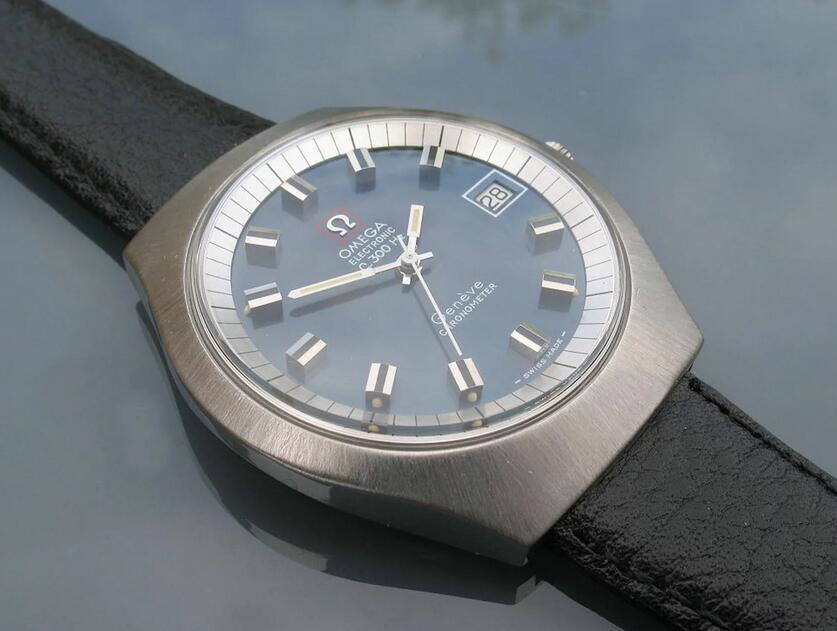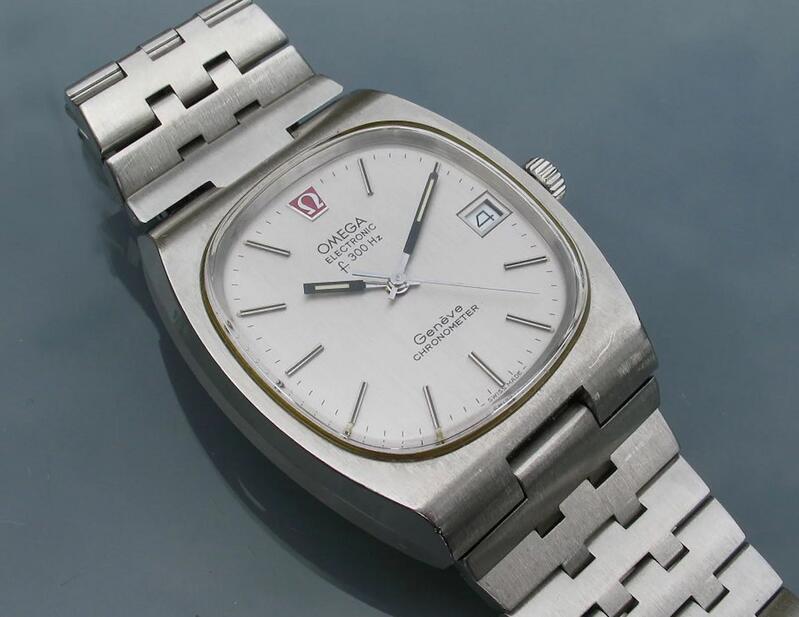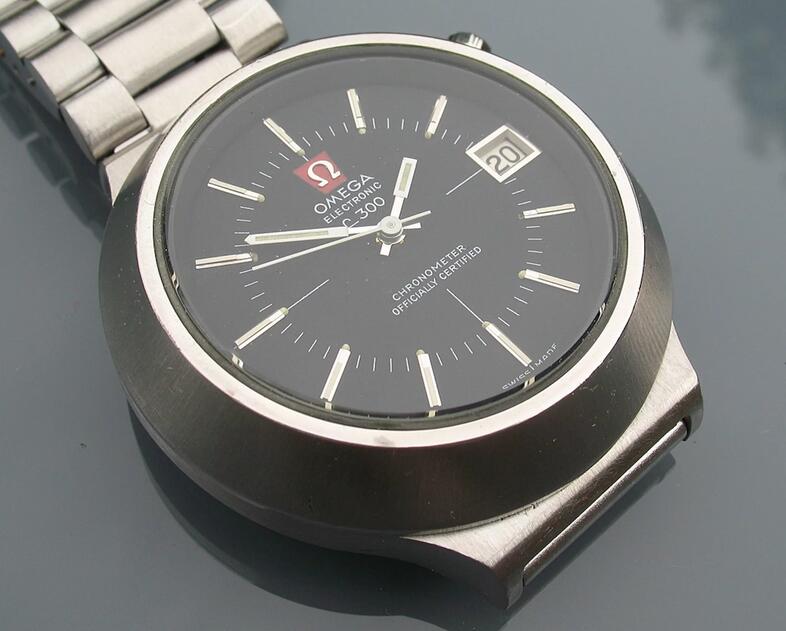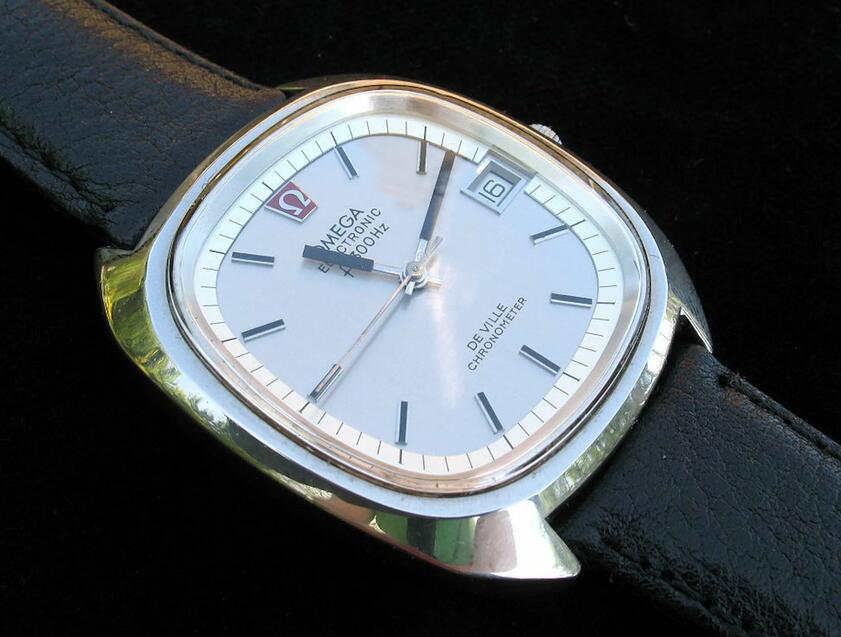Omega has always been on the cutting edge of horological technology. Aside from the engineering coup that was George Daniels’ co-axial escapement, Omega is responsible for pushing the watch industry forward throughout the decades. From the first diver’s watch ever brought to market for public consumption in 1932 to the brand new Spirate system released last year, innovation is part of Omega’s creative DNA. That pioneering spirit led the brand to launch its oft-forgotten F300 line in the early 1970s. Affectionately dubbed “hummers” because of the constant hum that emanates from their tuning forks, these cheap Omega replica watches are an absolute treasure of the vintage watch market.
Max Hetzel and the origins of the tuning fork movement
When Omega’s F300 models became available in 1970, they were riding the electronic wave in a haze of techno-buzz. Quartz was seen as the way of the future, and mechanical watches were viewed by many as old hat. The story of these quirky, yet brilliant, UK luxury Omega fake watches truly begins and ends with one name: Max Hetzel, a Swiss engineer and inventor. He began working in 1950, not for Omega, but for Bulova, in their Biel facility. While watchmakers had been tinkering with the use of tuning forks in place of a balance wheel for decades, it was Hetzel who finally made a highly accurate tuning fork watch a reality for Bulova.
Between 1953 and 1959, Hetzel led a team at Bulova that worked on creating a tuning fork-regulated watch that would be even more accurate than any movement before it. The result was the 1960 release of the first Bulova Accutron. It was a sensation, and truly one of the first signals that the world was entering “the space age”. It boasted an accuracy of +/- 2 seconds per day. It’s no surprise that Bulova’s Accutron models are still making people talk. At the time of its release, the Accutron was seen as the epitome of 20th-century watchmaking technology, and everyone wanted one.
Aside from the improved accuracy, the tuning fork movement’s most obvious visible benefit was the second hand’s lovely smooth sweep. Moving at a whopping 300Hz, the second hand danced around the dial far quicker than that of a traditional mechanical watch, which was no small feat. But what does the Bulova Accutron have to do with the best replica Omega F300 line watches?
Omega enters the fray
Fast forward a few years, and Max Hetzel is no longer with Bulova. In 1969, he began working for – you guessed it – Omega. By this time, his patented tuning fork design with Bulova had been licensed and and modified by Swiss movement maker ESA to create the 9162 and 9164 movements. They also added the ESA 9210 which had a chronograph function.
Omega, seeing an opportunity to expand even further into the high-tech watchmaking space, decided to use the ESA tuning fork movements in a new line of perfect Omega copy watches dubbed the Omega Electronic F300. The F stood for frequency as it often does in physics equations, and the 300 referred to the 300Hz frequency of the tuning fork vibration. They made their own improvements and modifications to the movement, and added copper plates which make it easy to differentiate the Omega tuning fork movements from other standard ESA versions. The ESA 9162 became the Omega Calibre 1250, the ESA 9164 became the Omega Calibre 1255, and the ESA 9210 chronograph movement became the Omega Calibre 1260 which was used in the Omega Speedsonic models. All three were certified chronometers.
In 1970, Omega launched the F300 Electronic line, and it was an instant hit. It gave Omega a boost into the modern tech revolution of the 1970s. F300s were included in the De Ville, Seamaster, Constellation, and the aforementioned Speedsonic. For the most part, Omega stuck to their traditional design language which their customers were used to, while housing ultra modern technology inside.
While most of the F300 models did not stray too far from Omega’s look, a few were decidedly ’70s. That is precisely what makes so many Omega F300s so interesting today. It’s like wearing a living time capsule on your wrist. There is truly a smorgasbord of options when looking at vintage models still available on the market.
A varied design catalog
Some of the most 1970s models that came out were the modern-looking, tonneau-shaped models and the integrated-bracelet TV case versions which stretched across multiple lines. In classic Omega style, they released a myriad of different dial designs with each case shape, and they weren’t only available in stainless steel. Several Omega Electronic F300s were made with gold plating to add a touch of classical panache to their oh-so-modern top replica Omega watches.
When searching the internet for F300 models, the first thing that one notices is the incredible amount of variety of designs. They range from some of the most dressy De Ville and Constellation models to the sportiest (and one of the bulkiest) Seamasters ever released. It appears that Omega may have been testing the waters in anticipation of electronic Swiss made Omega super clone watches completely taking over the market. The result is a wealth of vintage F300 models still available on the market to suit almost any collector willing to take a leap.
A good quality vintage watch
Aside from the ample designs from which to choose, the quality of the AAA Omega replica watches is, in a word, impressive. They are solidly built stainless steel watches and feel hefty on the wrist. The durable steel used in their construction is satisfying to the touch. Surprisingly, they feel just as robust as most modern watches. Most of the crystals, especially on the earlier models, were mineral, so they’re prone to scratches, but it’s not hard to find ones that are still in good shape.
While the case and bracelet designs were solid and durable, the same can be said for the F300 movements. Some have referred to them as the best movements ever made because of the high frequency and accuracy they offer. Not to mention the fact that at any given time there are hundreds of working models for sale nearly 50 years after their release. This brings up an issue that should be mentioned. As with any vintage watch, many pitfalls come with buying a vintage F300. The movement may eventually fail and it’s not likely worth the price, perhaps over US$1,000, to have it repaired. There are, however, a number of these movements, as well their ESA counterparts available for sale as replacements for less.
As far as price goes, it’s hard to think of a better entry-level luxury watch for someone to start with. The price range for a working F300 hovers between US$400 and US$1,500 on the used market. That’s precisely why it was one of my very first “luxury” Omega fake watches for sale. It came without a luxury price tag, which was a nice way to dip my toes in the water before diving in head-first. Within that wide price range, you can find just about any design and condition you can imagine.
There are also a few rare pieces mixed in that fetch a higher price, but with that higher price comes higher risk. For those who may want to take a chance on one of these humming little stunners, it may be most wise to go with something on the lower end, so if there are any “technical difficulties” you haven’t lost much. As someone who has owned three F300s, I can attest that they’re worth the risk.
The ultimate conversation starter
Perhaps the best reason for buying an Omega Electronic F300 is that it’s a conversation piece. Any time I’ve worn one (albeit around watch people), I get asked about it. People want to know the period it’s from and what movement it has. Most people aren’t familiar with the history of the line nor have they ever seen those sexy seconds sweep in person. These wholesale replica Omega watches are just as much fun to talk about and show off as they are to wear. The Omega Electronic F300 is a watch worth talking about, and one that offers one of the most impressive second-hand sweeps of all time from a prestigious Swiss brand. To top it all off, it hums to you – so you’ll never feel lonely. What more could you want in a first luxury watch?



